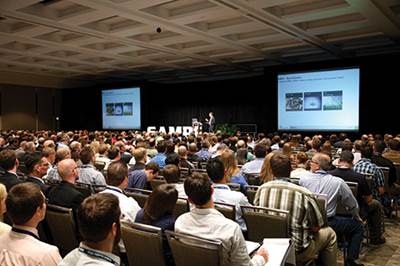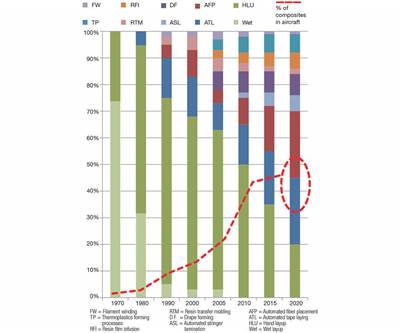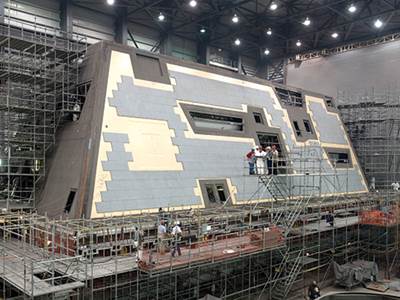Materials
PCB environmental concern: Hit and miss
Efforts to eliminate substances deemed environmentally unfriendly by consumers have already had a significant impact on the printed circuit board (PCB) market.
Read MorePrinted circuit boards: A mobile market
Glass fiber/epoxy prepregs have dominated the mammoth PCB market for decades. Will that continue in a time of great change?
Read MoreTeijin's high-speed composites manufacturing process: Still a mystery
Since Teijin's 60-second carbon fiber molding process was announced in 2011, we've heard little about it. It would be great for the industry if it could bear fruit soon.
Read MoreUltrasound evaluation of prepreg impregnation levels
The Ultran Group has developed non-contact ultrasound (NCU) that can accurately assess prepreg level of impregnation (LOI) with implications for out-of-autoclave processing, inline quality control and even automated tape laying.
Read MoreMassive Technologies coordinating sale of aero-grade carbon fiber
The company is offering 432,000 lb of aerospace-grade carbon fiber, originally purchased by Boeing for the 787, at a discount from the retail price.
Read MoreLeichtbau ist hybridbau
Integrating multiple materials and functions for lightweight construction in the German automotive industry.
WatchSAMPE Seattle 2014 Report
The Society’s reconfigured Spring advanced materials event in Seattle, Wash., attracts speakers, exhibitors and attendees in large numbers and international dimensions.
Read MoreThermoplastics in Aerospace Composites Outlook, 2014-2023
Capable of volume production, thermoplastic composites will gain new market share in the aerospace industry.
Read MoreResin infusion produces autoclave-capable tools for Scorpion jet
Leading Edge Aerospace designs and builds cost-effective prototype tools for maverick military aircraft concept.
Read MoreDestroyer deckhouse roof meets U.S. Navy fire code with phenolic composite
An all-composite deckhouse superstructure, built by Huntington Ingalls Industries (Gulfport, Miss.) cuts topside weight and enables stealth capability by reducing the radar signature of the U.S. Navy’s new, nearly $4 billion (USD) Zumwalt-class destroyer.
Read More

















